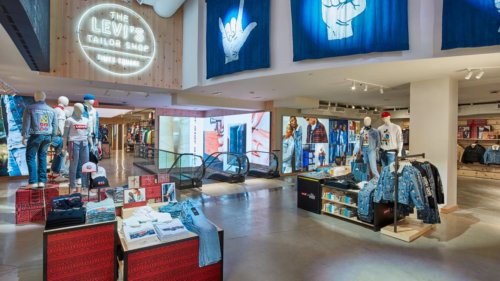With COVID here to stay, at least for the near term, retailers are reevaluating their digital strategies and in-store experiences—and that means more than rolling out new safety protocols. Brands and retailers must take a holistic approach to design relevant, safe, and enjoyable retail tech solutions that reflect consumers’ preferences and behaviors.
The phrase “new normal” is overused but spot-on: COVID has accelerated changes in consumer shopping behavior, and those changes aren’t going anywhere. According to McKinsey research, the pandemic has contributed to a surge in e-commerce, a decline in discretionary spending, and a preference for trusted brands.
These trends will probably persist for the next 12-18 months. Some, like the rise in online shopping, will endure even after COVID. With these trends in mind, let’s consider tactics brands should deploy to stay connected to customers, put shoppers at ease in-store and strengthen relationships across channels.
Think digital—even in-store
In these uncertain times, customers need to know you care about them personally, and that you are prioritizing safety. For brands, this requires outreach via personalized emails or mobile app experiences, as well as over-communicating in-store via digital signage and voice messages, even if it interrupts the usual customer experience.
As you consider communication tools and the message itself, keep customers needs top of mind. For example, some retailers have rolled out remote queuing tools that allow people to estimate in-store wait times, or to reserve a spot in the queue before they leave their home.
To stay connected with customers and prospects during the height of the pandemic, the Chinese clothing brand Yinman used WeChat. It credits the strategy for attracting 650,000 new customers, despite substantial store closures.
Retailers must also prioritize employee communication. Employees are your brand ambassadors, the enablers and protectors of your customer experience. Communicate the steps you are taking to keep them safe via email, written documentation, and in-store messaging and signage.
Do not forget to express your gratitude and to celebrate wins. Show people you appreciate their time and do so publicly. This is always best practice, but it matters now more than ever.
Change the mood
Customers used to go to stores because they wanted a memorable, enjoyable experience. That is still true in some cases, but these days, they also want to feel cared for and safe.
There is less room for bravado moments or high-energy atmospheres. Shoppers want softer tones and more emotional, personalized connections.
Retailers, including stores, hotels, and restaurants, should reflect this state of mind in the music they play, the lighting they choose, and the digital and voice messaging they use to communicate safety protocols and updates.
Be sure to educate your staff about the mood you are trying to create. You may need to change your in-person greetings to show empathy and relevance. Communication feels more real in the post-COVID age. People are desperate for human communication.
So, urge your team to embrace authentic, human connection and to go the extra mile to reward patronage. Perhaps that means reaching out with a phone call to thank someone for their purchase or to address a customer service issue. Taking the extra step will come back ten-fold, across channels.
Create a need to leave home
Leisurely shopping is at an all-time low. Customers are not meandering the aisles or popping into a store on a whim. They are visiting the places they are loyal to—brands that fill a need or have fostered a connection with them.
To encourage foot traffic, communicate a need in your messaging. This could mean sharing a promo code for an essential item or reminding customers that their support matters. Consider focusing on your most loyal shoppers, as these are the people most likely to visit your locations.
If someone is willing to leave their house during the pandemic, they best be rewarded with an exceptional and safe in-store experience.
Related: How to Bring Your Customers from Compelling Experience to Transformation
Retailers are using Plexiglas; one-way aisles; earlier opening hours for at-risk populations; frequent disinfection of stores; occupancy trackers; hand sanitizer at store entrances, exits, and check-outs; and contactless payment options to protect and entice customers and employees.
You want your stores clean, but your brand voice and ambiance should not be sterile. People are still looking to be inspired, have fun, connect with people and get a break from the world outside. So, don’t forget what makes your store a destination and your brand unique.
Think holistically
The customer experience starts before entering the store, so consider how to create a unified experience. In fact, try to think of your customer as the channel, rather than approaching in-store and online as silos. How are you showing you care, creating relevancy, and strengthening connections—online and off?
Certainly, brands’ digital and eCommerce strategies matter more than ever, but those faring best are putting customers first, rather than focusing on channel. They are weaving convenience and safety into every offering and communication and rolling out curbside pick up options, virtual shopping services and free delivery to the store or residence.
Taking these steps will help your brand nurture relationships and drive sales during COVID. Customers’ new or heightened preferences and behaviors will shape the future of retail, so mastering customer experience now, in the age of COVID, will position your brand to thrive once the pandemic is behind us.




